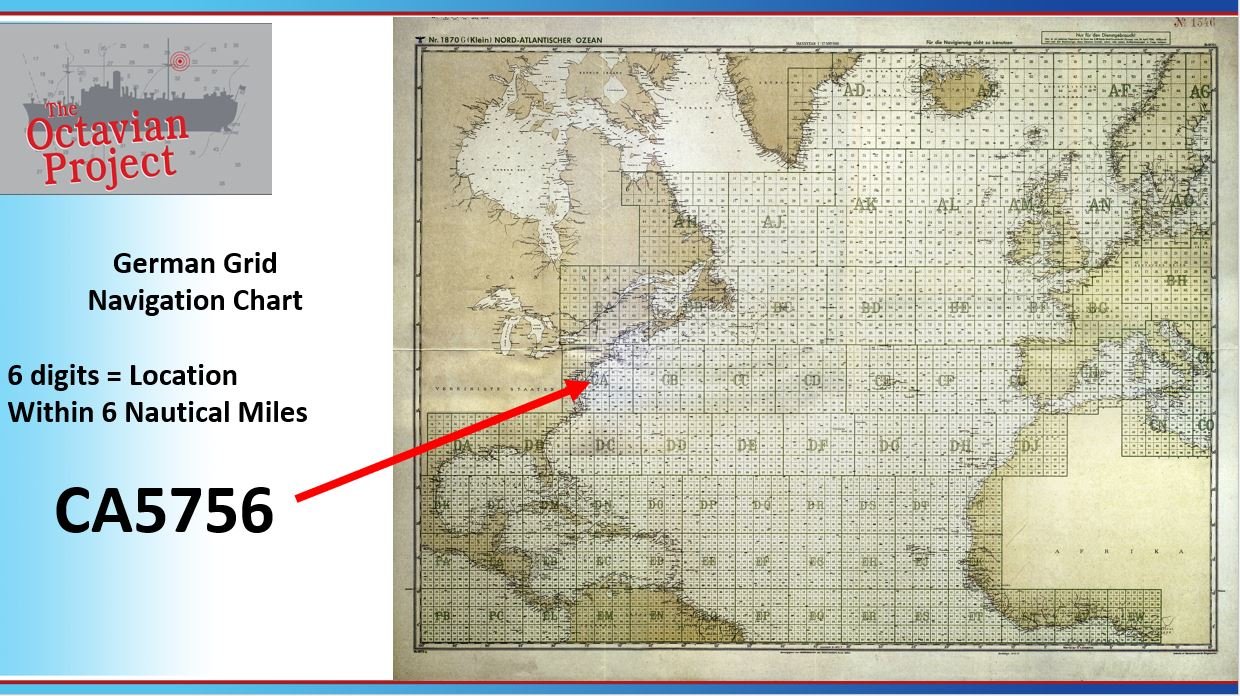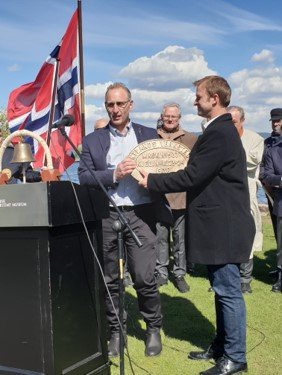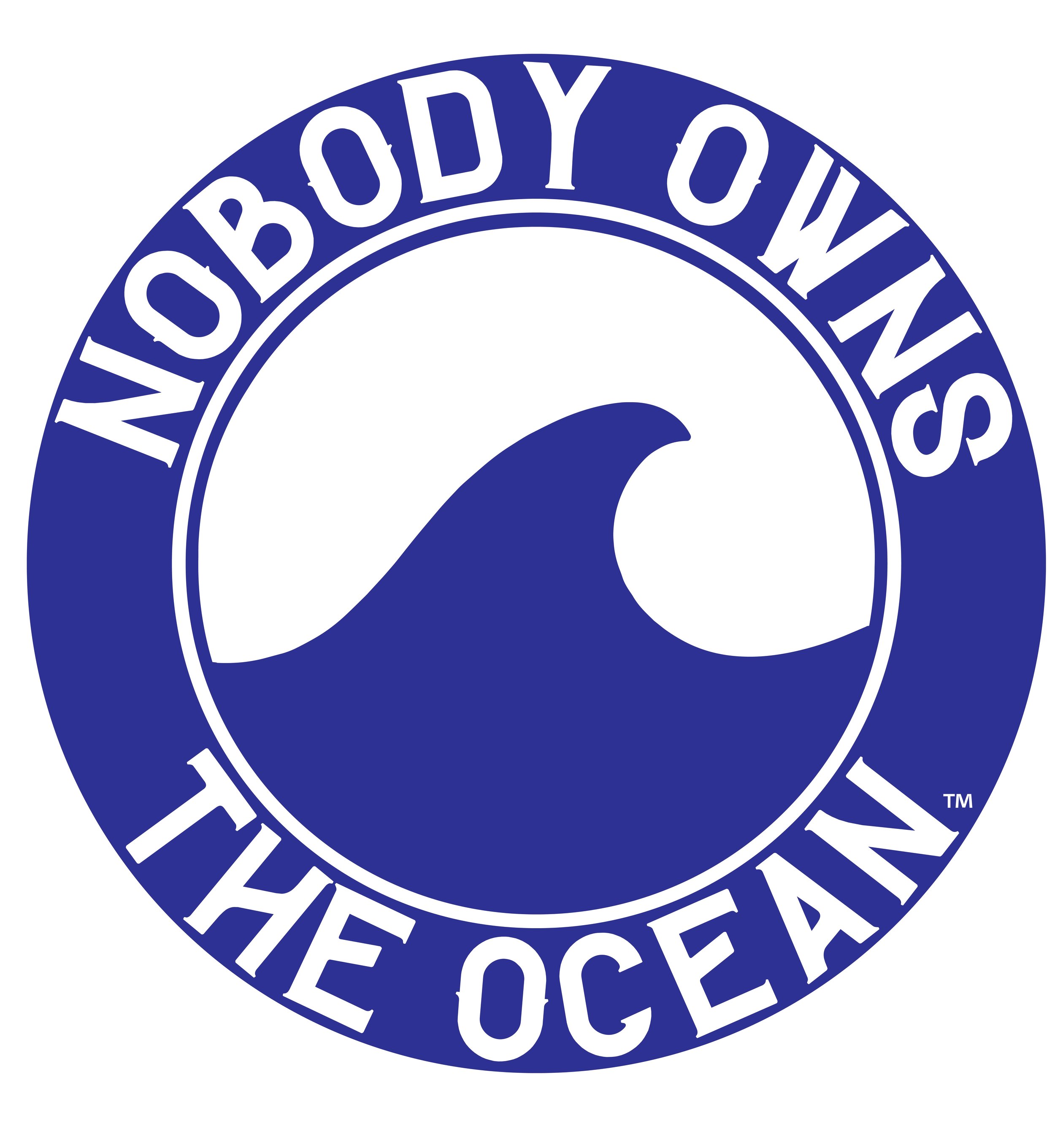The story of the D/S Octavian Identification -Doing the Right Thing
Although the height of shipwreck discoveries and identifications has long since passed, from time to time a very special story emerges.
D/S Octavian in her home port of Bergen, Norway
On July 1st 2018, I was given a list of confirmed wreck coordinates from Bob Cope of Full Ahead Sport Fishing. Bob and I are in the same marina and routinely collaborate on shipwreck numbers and stories. I entered these coordinates into my database and soon realized that this was a somewhat unique list. Several recently discovered shipwrecks were on this same list. We had a lead on a wreck in 188’ of water and those coordinates were in this group as well.
On July 4th 2018, Mike Dudas, Tom Packer, Brian Sullivan and myself ran the 60+ miles to the wreck. Brian & I hit the water first. Coming down the line we both saw two bright white coral covered hulks. Having recently dove “The Amazing Grace” a lost scallop vessel, we immediately assumed it was the roof and deck of another lost scallop vessel. But to our surprise it was a genuine steam ship.
Coral covered boilers upon descent- 188’
A diver shines a light through the steam engine.
Finding a steamship in 2018 is very rare, especially only 45 miles from Ocean City Maryland and in only 188’.
On our dive, Brian and I scootered to the stern, turned around and explored the engine area. The small engine was flanked by 2 boilers and there were yellow rocks everywhere. As Brian dug out a turtle light I scootered up to the bow. On my return Brian was gone, so I spent a few minutes exploring the engine. To my surprise, sitting at a 45 degree angle on the sea floor, in plain sight was an oval shape. I flipped it over and immediately knew it was a builder’s plaque.
Upon surfacing I gave my bag to Tom Packer and declared that I had found an old platter. Tom opened it and saw the prize. The bronze plaque said Nylands Verkstead, 1938 Oslo. It also included several serial numbers.
Having recently lost our dear friend Bart Malone, the previous December the thought that Bart moved some sand for me to find this plaque did cross my mind.
The team returns to Cape May July 4th, 2018
Upon returning to port we did some Googling and could not come up with a confirmed identity. I was able to find the shipyard online and a list of all ships they built in 1938. Of all the ships manufactured by Nylands, only one ship did not have eyewitnesses to her sinking, however this ship was reported to be sunken in Newfoundland. The ship was the D/S Octavian.
After attempts to call the Maritime Museum in Oslo it became apparent that they didn’t understand my English and I didn’t understand their Norwegian. I then contacted an old friend who lived in Oslo. Hildrun Somers worked with me at the Dudas dive shop in 1984. I asked Hildy if she could share this discovery with the Maritime Museum in Oslo. By July 6th the museum confirmed we had found the D/S Octavian. The Museum had the original contract between the ship builder and the owner. The numbers on the plaque were positively linked to the Motor and Boiler serial numbers on the contract.
A cleaned and preserved plaque showing serial numbers of motor and boilers.
So…. Who sank Octavian.
To discover who sank the Octavian and why the Octavian was not in Newfoundland, we enlisted the help of historian Gary Gentile. Gary found an obscure footnote about the U-123, Reinhard Hardegen & the wreck of San Jose. Reinhard Hardegen was the commander of the U-123 one of 5 U-boats dispatched to the United States at the beginning of the World War 2.
The U-123 was a type IX long range U-Boat
On January 17, 1942, only 4 days after the start of “Operation Drumbeat” the beginning of the German assault on America, it was reported that the U-123 sank the San Jose, a United Fruit freighter off Atlantic City. The problem with this tale was the San Jose was in a collision on January 17th and somehow the historians randomly gave credit to U-123 for the sinking.
Reinhard Hardegen- Commander of U-123
Gary Gentile and Mike Dudas tracked down an English version of the KTB (working was diary) of the U-123. The commander Reinhard Hardegen, wrote every bit of enemy action in this KTB, including the location in a 6-digit code that tied to the German Grid Chart.
The KTB in Hardegen’s words.
With some help from Richie Kohler, we were able to get a copy of the German Grid chart and Richie explained how to use it. This chart was then used to figure out the location of U-123 on January 17th. Using an internet converter, we were able to determine the latitude / longitude location of the January 17th attack. This location was only 800 yards from the actual location of the Octavian. Not bad for 1942 and not having GPS or any electronic navigational aids.
The German Grid Chart
So why the geographical mix up. This little tramp steamer under the Norwegian flag left Galveston Texas with a load of sulfur bound for St. John, New Brunswick. On the early morning of January 17th, 1942, the Octavian, its crew of hard-working Norwegian merchant mariners vanished in a plume of smoke into the cold Atlantic Sea. Never to be heard from again until this identification. Coincidentally the U-203 sank a ship near “Saint John, Newfoundland” on this same day. At the end of the war, the assessors needed to “balance the casualties of the u-boat war” and somehow the St. John and Saint John got mixed up. For the next 76 years the parents, wives, children, grandchildren and great grandchildren of the brave sailors believed their love ones perished off the coast of Newfoundland.
After further discussions with the team at the Maritime Museum in Oslo, we offered to hand deliver the plaque to the Museum as long as it was put on display and not shelved in some back-room warehouse. We came to an arrangement and a date was set for May 8th 2019. May 8th is a special day in Norway as it commemorates the day Norway was liberated from the Nazis in 1945.
So… of we went to Norway. 9 of us including Myself, Mike Dudas, Liberty Marie, Tom & Kim Packer, Tim Terrey, John Copeland, David Fisher and Gary Gentile. The trip was simply amazing. We were greeted as old friends from the get-go.
The Team in Norway with our new friends.
On the Big Day of May 8th, we all gathered at the Museum. To our surprise through a social media campaign, the museum found 87 descendent of the sailors that vanished in 1942 on the Octavian. We gave a brief presentation and were greeted with such warm and gracious thanks and hospitality it was overwhelming.
Giving the Plaque back to Norway after 76 years
Thelma Dahl, the great granddaughter of Octavian’s Captain Jans Dahl came up to us with tears in her eyes. Upon hearing that she was a descendant of the captain, Tim Terry graciously offered to ship her the helm he found on the ship. Her great grandfather’s hand had held that wheel when he was murdered by a Nazi U-Boat.
Tim Terrey holds the Helm of D/S Octavian he recovered.
The Helm preserved in the home of the Dahl Family in Norway, descendents of the Captain of D/S Octavian.
As time goes on the simple possession of shipwreck artifacts is losing its importance. As young divers we wanted to find all this “stuff”. As time moves on, we find ourselves surrounded by so much “stuff” that the meaning of each piece loses importance. It’s the memories of the finds and the friends you found them with that make them important.
Having been a wreck diver for over 40 years this story contains many lessons. First, “nobody owns the ocean”. The ocean and the ships we dive belong to everyone and they are there for everyone to enjoy whether it’s diving or fishing. The real joy comes from sharing and collaboration, as Bob Cope did with the coordinates. Another lesson is that every wreck contains history and in most cases loss of life. We must show respect for those lost at sea and we must remember this on every dive. The final thought is to “do the right thing”. Returning the plaque to Norway and meeting the descendants has 1000 times the value of a bronze plaque hanging on your living room wall.
I encourage everyone to share the sea and be kind. Remember “Nobody Own The Ocean”















